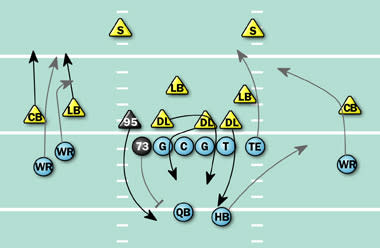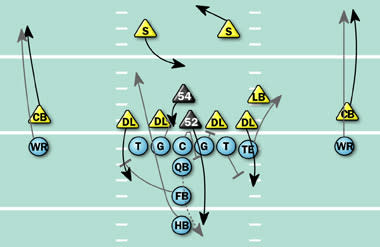Jags must recover from bad experiment
Also in this article:
Next Surveillance:
Redskins
More NFL:
Editor's note: Yahoo! Sports will examine the biggest weakness of the 2009 season for every team and explain how each franchise can address the issue. The series continues with the Jaguars, who finished fourth in the AFC South (7-9).
Biggest problem in 2009: An ill-fitting 3-4 defense led to a non-existent pass rush

Jaguars coach Jack Del Rio is hoping for a more explosive defense in 2010.
(Fernando Medina-US Presswire)
In the past decade, many teams have tried to follow the Super Bowl-winning examples of the Patriots and Steelers by switching to 3-4 defenses as their primary schemes. Nearly half the teams in the NFL now run the 3-4 to a greater or lesser degree (some teams mix in different kinds of four-man fronts around it), and the ramifications when you don't have the personnel for the switch can be severe. The pre-Rex Ryan Jets tried the move under head coach Eric Mangini, and their defense fell apart. From his days in Baltimore, Ryan understood the pressure and coverage concepts of the 3-4 and was able to adjust to his personnel and vice versa – now, the Jets have the best defense in the NFL. The Chiefs are still trying to get their 3-4 front seven right.
The Jacksonville Jaguars joined the ranks of 3-4 converts before the 2009 season, and were forced into compromise situations when defensive end Reggie Hayward(notes) broke his leg in the season opener. One year after setting the pace with blitzes under aggressive defensive coordinator Gregg Williams (who went on to redefine the Saints' defense with another 3-4 switch), the Jags threatened few quarterbacks. Not only did the 2009 Jags finish dead last in quarterback sacks with 14, but Football Outsiders' game-charting information listed nine of those sacks as blown blocks – leaving a grand total of five Jacksonville sacks as the result of actual effective pressure.
The Jags moved back to the 4-3 late in the 2009 season and will go forward with what head coach Jack Del Rio has said will be "a more penetrating, disruptive front." To that end, they signed ex-Packers end Aaron Kampman(notes) (the odd man out last year in Green Bay's 3-4 switch) and selected four defensive linemen in the 2010 draft. Still, with the rookies learning their places, Kampman recovering from ACL surgery and Jacksonville hoping that Hayward will be ready for reps by training camp, this improvement could be more about physical attributes than advanced schemes. What did the Jaguars do in 2008 which allowed them to put up 29 sacks – not a great number but more than twice as many as in 2009?
The 2010 solution: Use the 4-3 the right way

Figure 1

Aaron Kampman
The first thing to note is that of those 29 sacks, 15 came with the Jags only rushing four. It's not necessary to bring the house to get pass pressure, but it is important to optimize the efforts of your personnel. Against the Browns in Week 8 of the 2008 season, Jacksonville used a four-man front, a simple tackle stunt and the strength of right end Paul Spicer(notes) to get a sack/fumble combination on quarterback Derek Anderson(notes) (Fig. 1). The Browns had the ball with third-and-3 on their own 48-yard line with 11:58 left in the game. Against a shotgun, three-wide set – and the stunt occupying the interior line – Spicer bulled tackle Joe Thomas(notes) back into Anderson and stripped the ball. Thomas recovered the fumble but the drive was over. Going forward, Kampman could use his speed and power to play the role of Spicer and bring the bull rush – when healthy, he's frequently among the league's top quarterback harassers. First-round pick Tyson Alualu(notes), a very quick defensive tackle from Cal, is conversant in the kinds of stunts, loops and penetrations key to the resurgence of the Jacksonville pass rush.

Figure 2
Against the Colts in Week 3 of the 2008 campaign, the Jags showed a highly effective six-man blitz (Fig. 2) that could feature new middle linebacker Kirk Morrison(notes) (acquired from Oakland in a draft-weekend trade). This play came with 6:43 left in the first quarter and the Colts up 7-0. Indy had first-and-10 on its own 37 and lined up with two receivers and an I-formation backfield. The Colts went with slide protection to the right, but that actually worked against them when linebacker Daryl Smith(notes) (52) blew right around center Jeff Saturday(notes) and linebacker Mike Peterson(notes) (54) looped around. With the fullback out to block the right end and the halfback out on a route, Smith had an easy road to Peyton Manning(notes) for that sack.
Last year, the Jags relied too much on the idea of a schematic quick fix. They paid dearly for that notion and now seem to understand that getting back to the middle from a pass-rush perspective will be contingent on putting the right players in the right situations. It sounds like a simple concept – but if that were the case, so many teams wouldn't get it so wrong.
